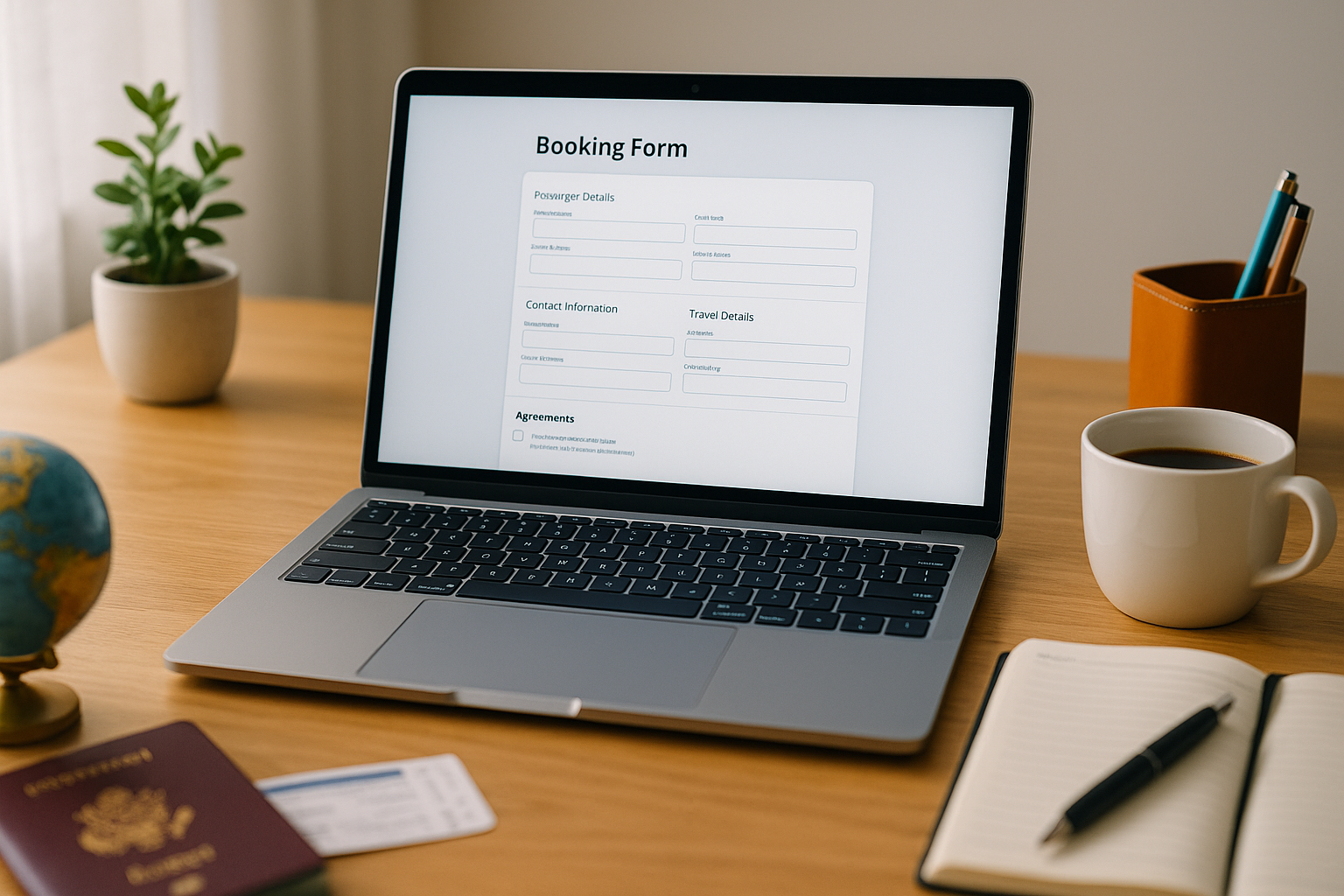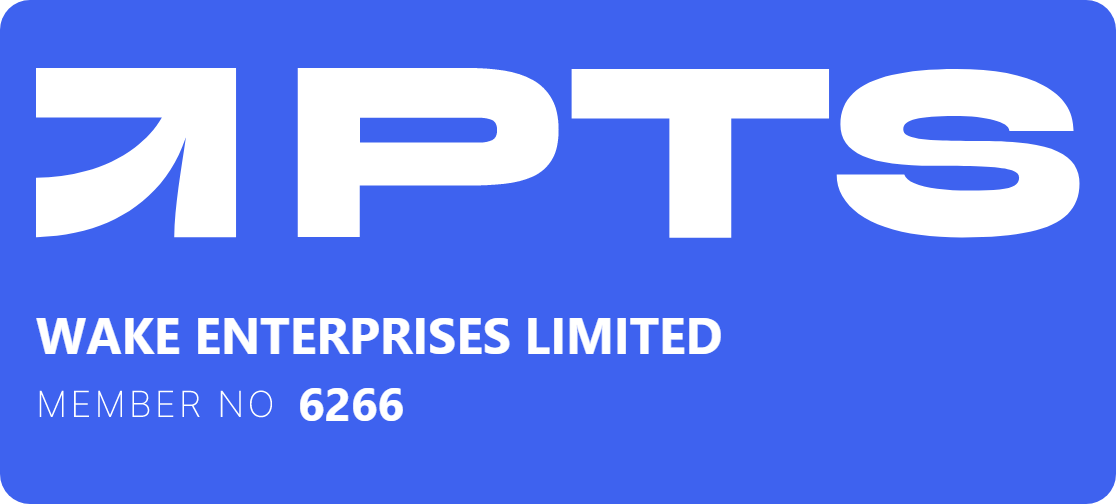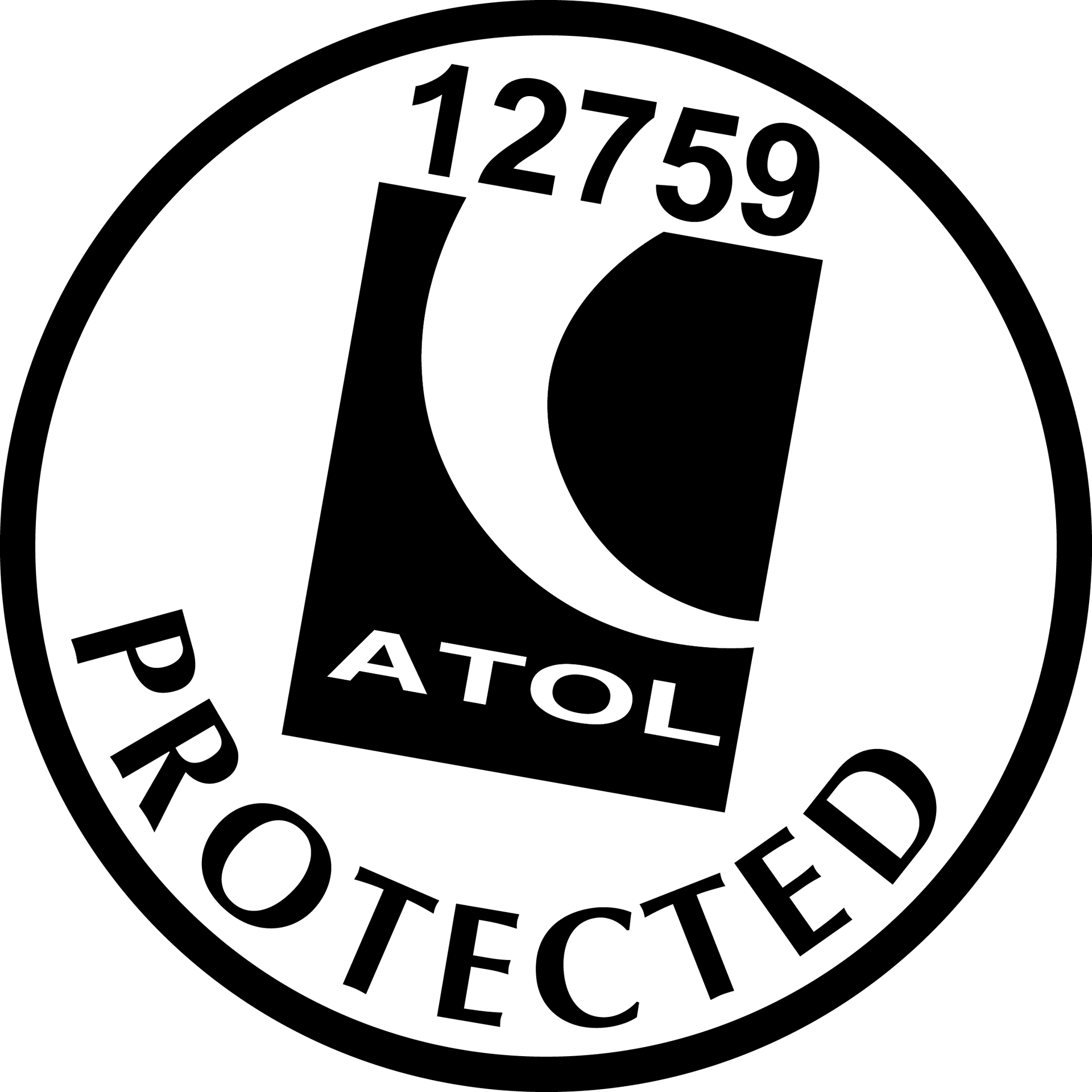Creating the Perfect Travel Booking Form for Your Clients
Creating the Perfect Travel Booking Form for Your Clients

A well-designed travel booking form isn’t just an admin tool — it’s the moment your client formally chooses you as their travel professional. For a travel homeworker, it becomes the bridge between enquiry and booking, helping you gather essential details, protect your business, and deliver a seamless customer experience from day one. Creating the perfect form means balancing compliance, clarity, and convenience while showing your clients that they’re in safe, capable hands.
As more people choose flexible careers and explore the world of travel homeworking, having a polished and professional travel booking form helps you stand out from the competition. Rather than relying on generic templates or cobbled-together documents, designing a form specifically built around your workflow sets the tone for repeat business, word-of-mouth referrals, and confident customer relationships.
Why Your Travel Booking Form Matters More Than You Think
Many new travel homeworkers assume a booking form is just a formality — something you tick off before finalising a holiday. In reality, it’s one of the most powerful business tools you’ll ever use. A strong form protects both you and your client by ensuring that every detail is accurate, every declaration is covered, and no regulatory requirement is missed.
A high-quality travel booking form also communicates professionalism. Clients feel more confident booking with someone who takes their responsibility seriously, especially in an industry where mistakes can quickly become expensive. Beyond compliance, it’s an opportunity to demonstrate the level of care and service that sets you apart from mainstream providers.
When crafted properly, your form becomes:
- A legal safeguard
- A customer-service asset
- A sales tool
- A confidence-building milestone in their travel journey
And for a travel homeworker running a business from home, this level of polish and structure is a game-changer.
The Essential Elements Every Travel Booking Form Must Include
To rank above competitor sites — and provide genuine value for new travel homeworkers — it’s important to set out a clear structure explaining exactly what a travel booking form should contain. These elements meet industry expectations, comply with UK travel regulations, and support a professional workflow.
1. Full Passenger Details
A travel booking form should capture complete information for every traveller, not just the lead passenger. This includes:
- Full legal names (as per passport)
- Dates of birth
- Email addresses and mobile numbers
- Postal addresses
- Accessibility needs
- Dietary requirements
This prevents errors, supports suppliers, and ensures documentation matches passenger records.
2. Passport & Identification Details
To ensure compliance and prevent identity discrepancies later in the booking process, always collect:
- Passport numbers
- Issue and expiry dates
- Nationality
- Country of issue
This helps avoid check-in issues and allows you to flag soon-to-expire passports in advance.
3. Holiday & Travel Requirements
A perfect travel booking form makes it easy for clients to specify their exact requirements, such as:
- Preferred dates
- Destination and length of stay
- Preferred airlines or cabin classes
- Room types
- Board basis
- Excursions or extras
- Special occasion notes (birthday, honeymoon, anniversary)
This allows you to tailor recommendations while building a personalised experience.
4. Emergency Contact Information
Many homeworkers overlook this, but having an emergency contact on file is vital — especially for solo travellers or adventurous holidays.
5. Insurance Declarations
You should always include:
- Confirmation that the client has, or will purchase, adequate travel insurance
- A statement acknowledging that failure to take insurance is at their own risk
- A recommendation to purchase cover immediately
This protects your business while reminding clients of their responsibilities.
6. Terms & Conditions Acceptance
This is your legal safety net. Your form must require clients to agree to:
- Your booking conditions
- Supplier terms
- Your privacy policy
- Payment schedules
- Cancellation rules
Make sure this is explicit and requires a signature or formal acknowledgment.
7. ATOL & PTS Compliance Messaging
Clients may not always understand the terminology, but this section reassures them of financial protection. For travel homeworkers, this builds instant trust.
8. Payment Details & Security
This section clarifies:
- Deposits
- Final balance deadlines
- Accepted payment methods
- What happens if payments are late
Even if you don’t collect card details directly (for security reasons), you should still outline how payments will be taken.
9. Health & Mobility Information
This is often forgotten, but crucial for many itineraries. Encourage clients to share:
- Existing medical conditions
- Mobility limitations
- Preferred seating
- Assistance requirements
This ensures you book appropriate travel arrangements — and reduces the risk of complications.
10. Client Declaration & Signature
Finally, your travel booking form should end with a declaration confirming:
- Accuracy of information
- Acceptance of conditions
- Permission to book
- Consent for communication
This is the final green light to proceed.
Digital vs Printable Travel Booking Forms: Which Is Better?
Most new travel homeworkers ask whether they should offer a digital form, a fillable PDF, or a printable version. The truth is: you should offer all three.
Digital Forms
Tools such as Jotform, Google Forms, Typeform, or CRMs allow you to create secure online booking forms that clients can complete on any device. These are perfect for fast-paced enquiries or urgent bookings.
Fillable PDFs
Great for clients who prefer traditional paperwork or want to keep digital copies.
Printable Forms
These are useful when handling older clients or when completing details together during a consultation call.
Offering multiple formats increases accessibility while giving clients the choice that feels right for them.
How a Travel Booking Form Supports Your Workflow as a Travel Homeworker
Your travel booking form doesn’t just gather information — it helps structure your entire customer journey. For someone running a homeworking travel business, the form becomes part of your professional toolkit.
It supports your workflow by:
- Providing clarity and consistency
- Protecting your booking files
- Minimising errors
- Reducing back-and-forth messages
- Encouraging clients to include details they may otherwise forget
- Reinforcing your credibility
Most importantly, it reflects the quality of your service. Clients can instantly see that you operate like a professional consultant, not a hobbyist.
Common Mistakes Travel Homeworkers Make with Their Booking Forms
To help your blog outperform competitors, this section addresses errors often seen on generic templates:
1. Making the Form Too Long
While you need to collect essential information, overwhelming clients with unnecessary questions causes form abandonment.
2. Poor Mobile Formatting
More than half of clients complete booking forms on mobile devices. A form that isn’t mobile-friendly is a revenue blocker.
3. Using Non-Secure Form Builders
Avoid forms that store sensitive data insecurely. Always use GDPR-compliant tools.
4. Forgetting to Make Certain Fields Mandatory
Crucial fields should never be optional. Missing dates of birth, passport details, or contact numbers causes ripple effects later.
5. Not Branding the Form
Your travel booking form should look and feel like part of your business — not a random template.
Best Practices for Designing a Professional Travel Booking Form
A high-performing form is simple, modern, and intuitive. Here’s how to achieve that:
1. Keep the Layout Clean and Logical
Divide your form into clear sections:
- Passenger details
- Holiday information
- Insurance
- Agreements
- Payment details
This makes it easier for clients to follow.
2. Use Clear, Accessible Language
Avoid jargon or long, complex paragraphs. The clearer the form, the fewer mistakes your clients will make.
3. Add Helpful Prompts
Small notes such as “must match passport” or “required for insurance purposes” improve accuracy and speed.
4. Use Checkboxes for Declarations
They streamline the process and help clients feel more in control.
5. Include Your Logo and Branding
Professional branding reinforces trust — especially for a home-based business.
6. Automate Confirmation Emails
Once submitted, send clients a confirmation email summarising their responses.
Jamie Says:
"Your travel booking form is more than paperwork — it’s the first moment your client formally places their trust in you. Keep it simple, keep it compliant, and keep it client-friendly. When your form feels polished and professional, your business instantly feels the same.
If you’re new to travel homeworking, investing time into building the perfect form is one of the smartest moves you’ll ever make. It sets the tone for the entire booking experience."
How The Independent Travel Consultants Support You With Booking Forms
Unlike many companies, we don’t expect new consultants to figure everything out alone.
You receive:
- A complete booking-form template (digital + PDF)
- Branding guidance
- Compliance-checked declarations
- ATOL/PTS protection wording
- Support integrating your form into your workflow
- Training on client data, GDPR, and secure communication
For those who struggle with tech or form design, we help you build, refine, and personalise your documents so your business is client-ready from day one.
Why a Great Travel Booking Form Is a Competitive Advantage
Today’s travellers expect professionalism, clarity, and convenience. When your form ticks those boxes, it elevates the entire experience. A polished form transforms you from “someone who can book holidays” into a trustworthy, knowledgeable travel homeworker who values accuracy and client care.
A great form:
- Builds confidence
- Reduces mistakes
- Speeds up the booking process
- Encourages repeat business
- Demonstrates your expertise
For potential clients comparing agents, the difference is instantly visible.
Final Thoughts
If you want to succeed in the world of travel homeworking, creating the perfect travel booking form is a non-negotiable. It isn’t just an admin tool — it’s part of your brand, your professionalism, and your long-term customer experience. Invest time into getting it right and you’ll enjoy smoother bookings, happier clients, fewer errors, and a business that runs with confidence and clarity.
If you’d love support creating your own professional-grade booking form — or you’re exploring becoming a travel homeworker — we’re here to help. The Independent Travel Consultants give you the tools, training, guidance, and support to build a successful business you’re proud of.
Whether you’re ready to join or simply want to learn more, reach out today and we’ll guide you through the next steps.
About Jamie Wake
Jamie is the founder of The Independent Travel Consultants and a passionate advocate for empowering others to succeed in the travel industry through honesty, training, and community. He brings decades of travel experience, a focus on doing things differently, and a strong commitment to supporting UK-based homeworkers.












